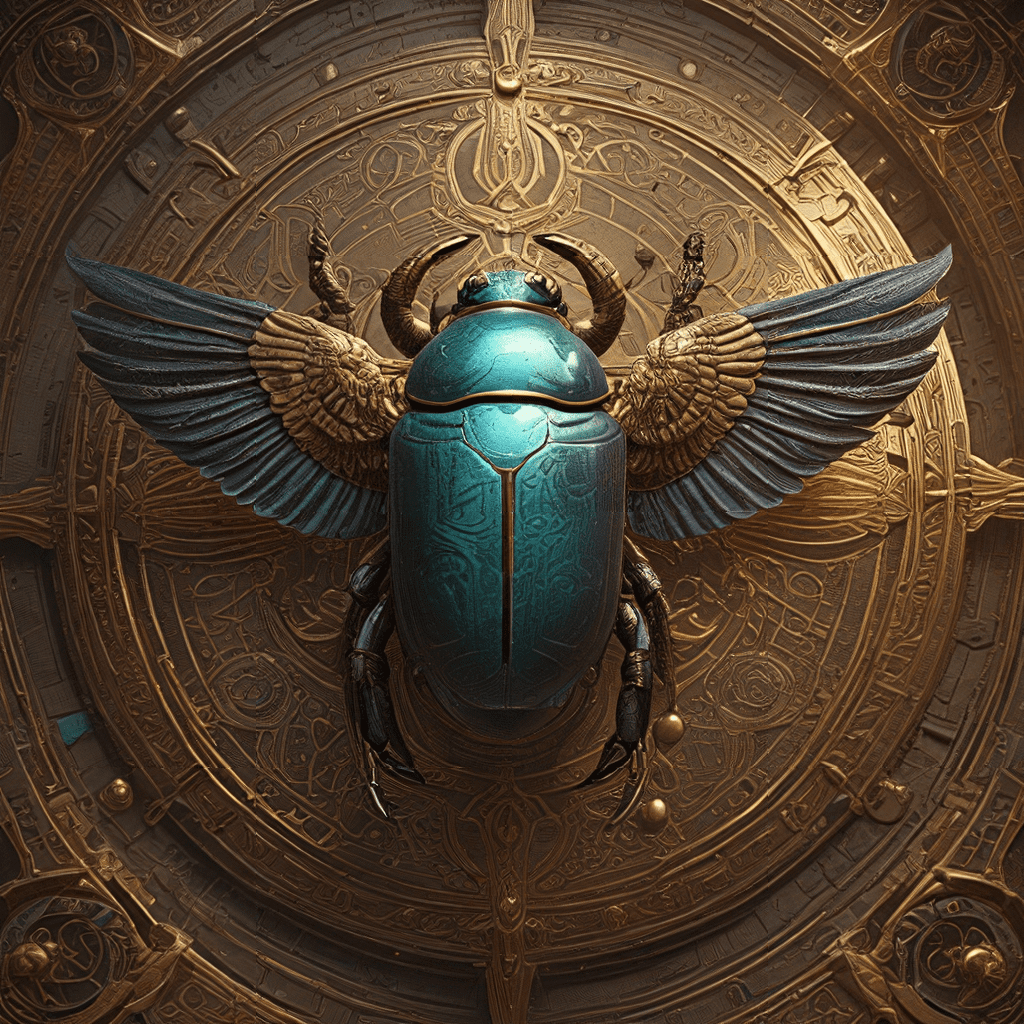The Scarab: A Symbol of Rebirth and Transformation in Egyptian Mythology
The scarab beetle, a small creature found in the sands of Egypt, held immense significance in ancient Egyptian culture. It was revered as a symbol of rebirth, transformation, and the eternal cycle of life, death, and resurrection. The scarab’s association with these powerful concepts made it a ubiquitous symbol in Egyptian art, religion, and daily life.
1. The Scarab Beetle: A Creature of Wonder
The scarab beetle (Scarabaeus sacer), also known as the dung beetle, is instantly recognizable for its distinctive shape. With a shiny black or brown exoskeleton and a prominent hump on its back, the scarab beetle is a fascinating creature. It is known for its peculiar habit of rolling dung balls, which it uses to bury and lay its eggs. This behavior, observed by the ancient Egyptians, fascinated them and was seen as a reflection of the sun god Ra’s journey across the sky.
2. The Scarab’s Life Cycle: A Metaphor for Rebirth
The scarab beetle’s life cycle is a powerful metaphor for rebirth and transformation. From a tiny egg buried in dung, the scarab larva emerges, feeding and growing in the darkness. After a period of metamorphosis, the larva transforms into a winged adult beetle, emerging from the dung ball and taking flight. This cycle, from a seemingly insignificant larva to a majestic flying creature, resonated deeply with the Egyptians, who saw it as a manifestation of the cycle of death and resurrection.
3. Khepri: The Scarab God of the Rising Sun
In Egyptian mythology, Khepri, the god of the rising sun, was often depicted as a scarab beetle pushing the sun across the sky. Khepri represented creation, renewal, and the eternal cycle of life. His association with the scarab beetle further solidified the creature’s position as a symbol of rebirth and transformation.
4. The Scarab as a Symbol of Creation and Renewal
Beyond its connection to the rising sun, the scarab was also seen as a symbol of creation and renewal in general. The Egyptians believed that the scarab beetle’s ability to create life from dung represented the creative power of the universe. The scarab became symbolic of the cyclical nature of life, death, and regeneration, reminding people that even in death, life would continue.
5. The Scarab in Funerary Practices: Protecting the Dead
The Egyptians used scarab beetles extensively in funerary practices. Scarab amulets were placed in tombs to protect the deceased in the afterlife and to help them navigate the perilous journey to the underworld. The scarab was believed to have the power to ward off evil spirits and to guide the soul toward eternal life. It was also believed that the scarab beetle’s association with the sun god Ra provided the dead with the light and energy they needed to journey to the afterlife.
6. Scarab Amulets: Promoting Good Fortune and Prosperity
Outside of funerary contexts, scarab amulets were also worn by the living to promote good fortune, prosperity, and protection. Egyptians believed that these amulets held the power to bring good luck, success, and long life. They were worn as pendants, rings, and even incorporated into jewelry and other decorative objects. The scarab’s potent symbolism made it a highly sought-after amulet.
7. The Scarab in Ancient Egyptian Art and Architecture
The scarab beetle was a popular motif in Egyptian art and architecture. Scarabs are found on everything from tomb paintings and statues to jewelry and furniture. The scarab’s image was often carved into seals and used to mark official documents and objects, indicating their importance and authenticity.
8. The Scarab’s Significance in Modern Times
The scarab beetle’s enduring symbolism continues to resonate in modern times. The scarab’s powerful image is still popular in jewelry design, tattoo art, and even modern art. It remains a potent reminder of the cycle of life, death, and regeneration, inspiring people to embrace change and to find hope in the face of adversity.
9. The Scarab’s Symbolism in Other Cultures
While the scarab beetle’s symbolism is most deeply rooted in ancient Egyptian culture, it has also found significance in other cultures across the world. The scarab’s association with rebirth and renewal has resonated with people in different societies, appearing in myths, legends, and artwork. Across continents, the scarab has come to embody the cyclical nature of life and the enduring power of transformation.
10. Conclusion: The Enduring Power of the Scarab
The scarab beetle, a seemingly simple creature from the sands of Egypt, has held a powerful and enduring place in human symbolism for millennia. Its association with rebirth, transformation, and the eternal cycle of life has resonated with people across cultures and throughout history. As a symbol of hope, renewal, and the enduring power of life, the scarab’s influence continues to inspire and resonate today, reminding us of the timeless beauty and wonder of the natural world.




